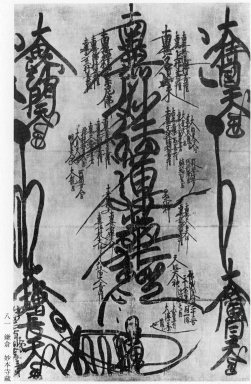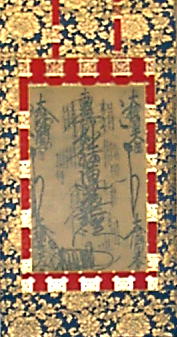
Who's Who on the Gohonzon?

by Rev. Ryuei Michael McCormick

 |
Who's Who on the Gohonzon?by Rev. Ryuei Michael McCormick |  |
 |
Namu Myoho Renge Kyo! |
 |
Lotus Seeds: The Essence of Nichiren Shu Buddhism gives the following basic explanation of the Odaimoku, Namu Myoho Renge Kyo:
Senchu Murano explains:
Senchu Murano also writes:
|
 |
|
Nichiren Buddhist Temple of San Jose |
Aitken, Robert. The Gateless Barrier: The Wu-men Kuan (Mumonkan). New York: North Point Press, 1991.
|
